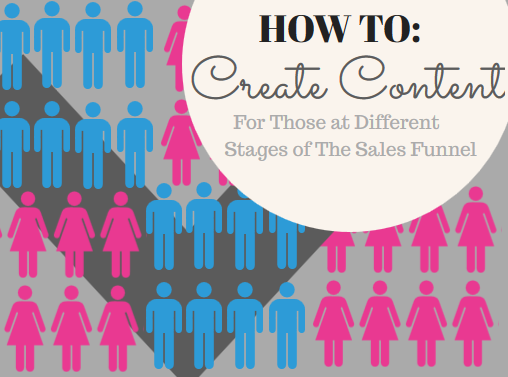
What’s the most powerful kind of content? The type that gives your audience what they need, exactly when they need it. That sounds great in theory – but how do you actually make it happen?
Thankfully, there’s no mindreading required – just an understanding of two important things:
- Your average customer’s buying cycle (this may vary between personas)
- Their pain points, fears, questions and emotional state at each stage of the cycle
When you’ve gained an understanding of both of these things, you can custom-craft your content to meet the customer needs and help to move them from one stage of the buying cycle to another. Tweet This
The Stages of the Buying Cycle
Let’s start but breaking out the typical stages of the buying cycle: Interest, Consideration, Purchase & Post-Purchase.
Interest: At this stage, you and the customer are relative strangers. The customer may not even be aware that they have a need for your specific product, but at this stage, they’re on the hunt for information. There’s no real relationship with your brand, and they have no reason to pick you over a competitor – yet.
To meet the needs of a customer in this stage of the cycle, you’ll want to focus on content that:
- Invites them to engage
- Introduces your brand, values and brand personality
- Entertains and engages the customer without pushing for a hard sell
Customers aren’t ready to buy at this point, so being pushy will only scare them away. You want to open the door and prove you have a product or service that can resolve the underlying pain points they’ve come to realize need addressing.
Calls to action during this stage can include invitations to engage, like sharing a comment, downloading a free resource, sharing your content or subscribing to your e-newsletter.
Consideration: During this stage of the cycle, customers know that they’ve got a problem that needs fixing and are in the process of finding options that can solve it. They’re risk-adverse, looking for solutions that they can trust.
At this stage, it’s important to build rapport and establish credibility. But keep in mind: customers don’t care about YOU, they care about their problem. You want to make solving that problem fast and easy.
At this point, create content like competitor comparisons, demo videos, tutorials, case studies and spec sheets that prove you’re the answer they’ve been looking for. This is still not the time to use hard-sale calls to action or put the user in a position of being obligated to buy.
Purchase: You’ve made it! The potential customer has weighed the competition, evaluated your offering and is close to making a purchase decision. Now’s the time to bring them home with a sales offer.
That said, they’re still nervous (as is anyone about to part with their money), so trust signals and risk-aversion messages are key. You need to let them know they’re making the right decision – and keep from distracting them with shiny objects along the way.
Content at this stage should focus on confirmation of research; items like ROI calculators, direct response copy, targeted landing pages, prices and plans, testimonials and any special offers that might entice them to make their decision more quickly.
Post-Purchase: Just because the customer purchased from you, doesn’t mean the relationship is over. Even if your leads are now customers, this is your opportunity to build loyalty and repeat business.
“Wow” your customers with follow-up service and friendly support, making sure they’re satisfied with their purchase and – if appropriate – giving them information they might find compelling when they re-purchase down the line.
Content here should focus on feedback and affirmation – things like surveys, feedback forms and newsletters. This can also serve as an opportunity to incentivize referrals – perhaps you can offer a special deal for those who recommend a friend?
Map it Out…
The first step to getting all of this done – before you start writing – is to map out your buying cycle, chart out the needs and pain points customers have at each stage, and then take a hard look at all of your existing content.
Ask tough questions: Do you have assets to cater to each stage? Where are the gaps? What needs to be created?
When you’ve done this, you’ll have a roadmap for content creation – content you KNOW is going to benefit the customer.
Now, it’s just a matter of creating it! Chances are, you’ve got some work to do – but Teknicks can help! If you’ve never conducted a content audit or you’re unsure how to begin creating the content you need, we’re always ready to help.